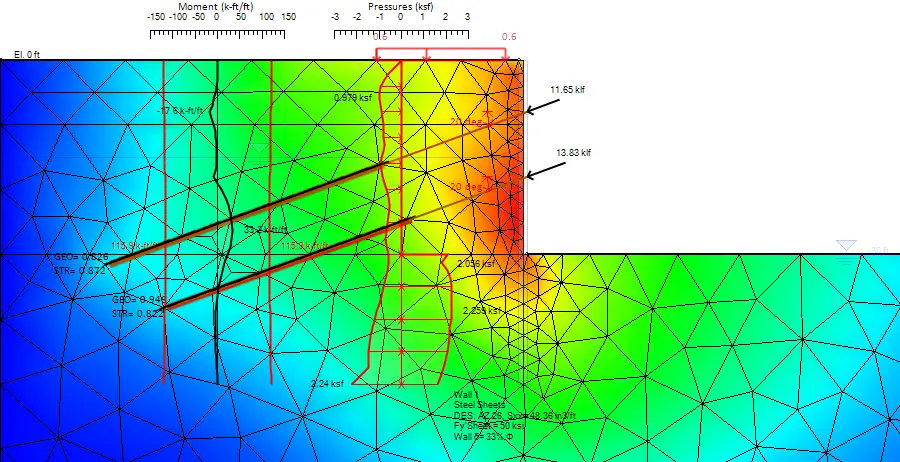Bin Type Retaining Walls
- deepexcavation
- Oct 6
- 2 min read
A Powerful Solution, Made Simple with DeepEX
Bin type retaining walls are a proven and versatile solution in geotechnical engineering. The concept is straightforward: two parallel facing walls are erected, the space between them is filled with soil or granular material in successive lifts, and as the backfilling progresses, steel tie rods are installed to firmly connect the walls together. This structural arrangement creates a massive gravity system, where the weight of the fill resists lateral earth pressures, while the tie rods ensure that the two wall faces act as a single unit.
Although the basic principle is simple, the performance of a bin wall depends on careful engineering. Every project has unique soil conditions, geometry, and loading requirements. Traditionally, engineers relied on manual approximations and simplified methods, but modern projects demand faster, safer, and more optimized solutions. This is where DeepEX software transforms the way bin walls are designed.

Image 1: Bin type wall in DeepEX – Steel sheets with tie rods
DeepEX allows engineers to easily model bin walls in full detail, including the staged construction process, the geometry of the wall faces, the arrangement of tie rods, and the characteristics of the backfill. With advanced soil-structure interaction analysis, the software evaluates both external and internal stability—sliding, overturning, and bearing resistance, as well as tie rod forces and wall panel stresses. Instead of relying on assumptions or conservative shortcuts, DeepEX provides a clear picture of how the wall will behave under realistic conditions, including seismic and hydrostatic effects.

Image 2: Bin type wall in DeepEX – global stability analysis
Bin type walls have found wide application in highway and railway embankments, in bridge abutments, in temporary earth-retaining systems, and in waterfront construction such as quay walls. Their modularity and adaptability make them especially appealing in long linear projects or where local granular fill is readily available. They can often be constructed more rapidly and economically than massive concrete retaining walls, while still offering reliable performance.
Of course, like any system, bin walls come with limitations. They require sufficient space due to their width, their stability depends heavily on the quality of the backfill, and tie rods must be carefully protected against corrosion. But these challenges are precisely where good engineering tools make the difference. DeepEX helps identify potential weak points at the design stage and allows engineers to test multiple configurations until the most efficient and cost-effective solution emerges.

Image 3: FEM analysis of a bin wall system in DeepEX
By combining powerful analysis capabilities with a user-friendly interface, DeepEX makes what was once a tedious and uncertain process both fast and reliable. Engineers can design with confidence, contractors can build with efficiency, and owners can rest assured that their retaining structures will perform safely for years to come.
In today’s competitive environment, where time, cost, and safety are all critical, bin type retaining walls remain an excellent choice—and DeepEX is the software that brings their full potential to life.
Let us show you how to reduce your design time by up to 90%!




